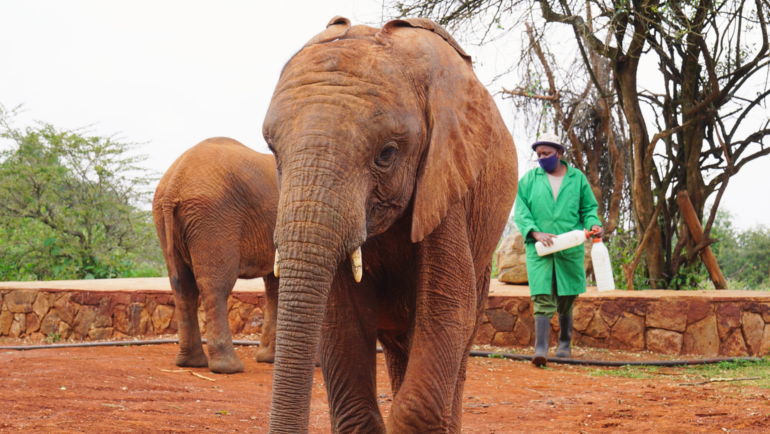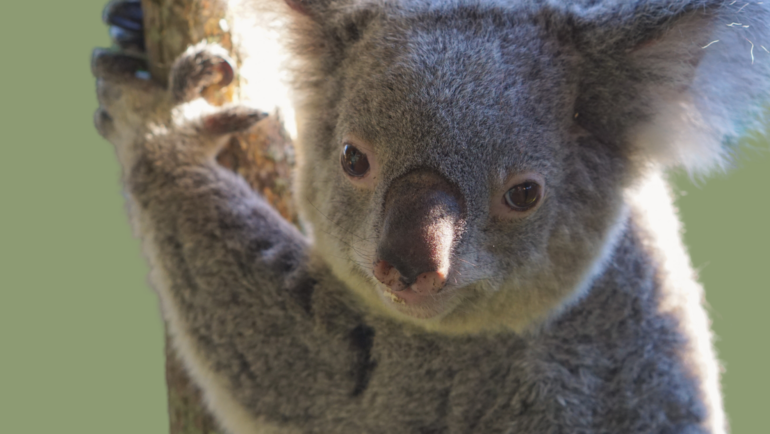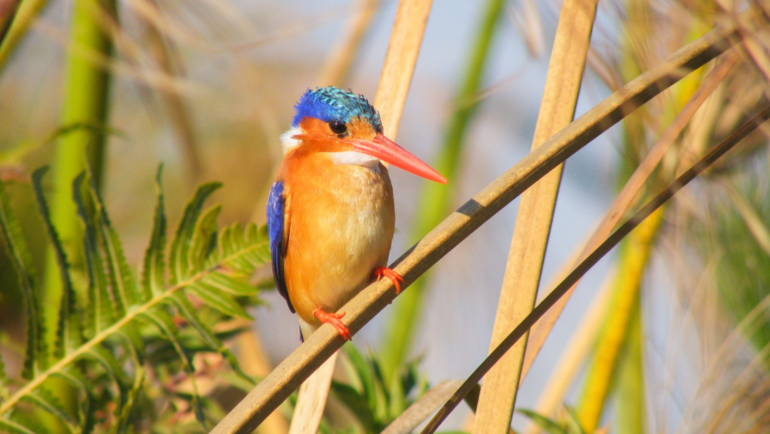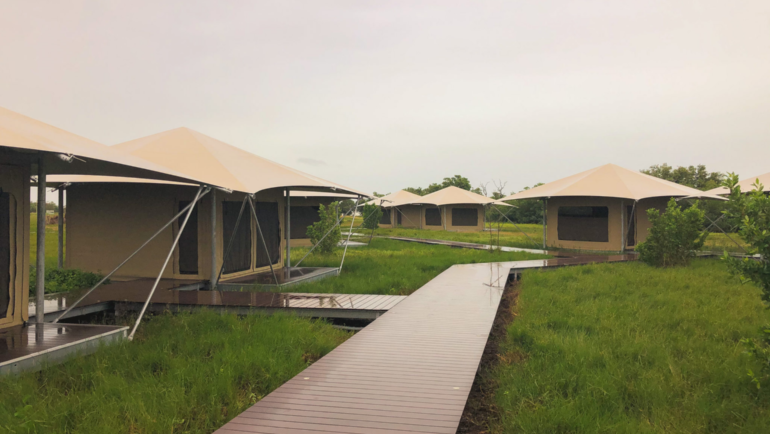Serengeti National Park is incomparable when it comes to seeing animals of all sizes! This vast ecosystem offers unparalleled wildlife viewing in an unspoiled environment. The endless horizon is sometimes the only fixture between the waving grasses of the plains and the skies above. Serengeti National Park is over 12,000 square miles in size, that’s bigger than the state of Maryland. This size allows the grasslands of Serengeti to host the largest unaltered animal migration of mammals in the world. Each year over a million wildebeests and other ungulates travel the circular loop between Serengeti in Tanzania and the Masai Mara in Kenya. Because of the massive abundance of prey species, Serengeti has been made famous by the diverse predator and prey interactions on its grasslands. This National Park is a must-see destination for many travelers. A majority of safari operations run between the months of June and October. This five-month period is known as the dry season, meaning resources are scarce and the wildlife congregates near water sources making for optimum viewing opportunities.
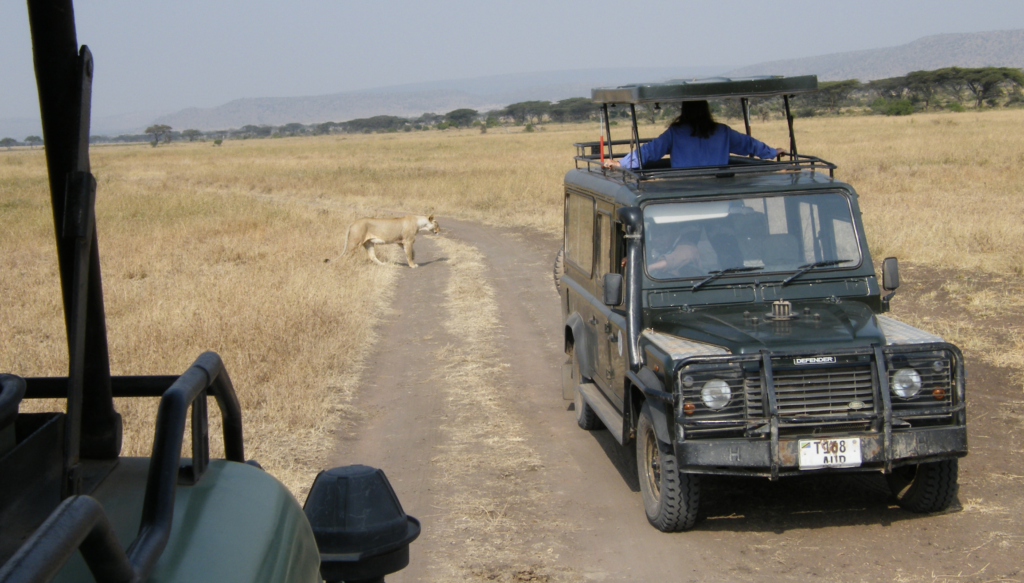
Any research into Serengeti National Park will garner a long list of animals that you might be lucky enough to see while on safari. From my experience, the Serengeti is teeming with wildlife, and I was pleasantly surprised by the biodiversity our game drives offered through the park. As with any safari, most companies will brag about a park’s “Big Five” status. To be frank, I do not care whatsoever about checking off the “Big Five” while on safari. Sure I do love seeing elephants, buffalo, leopards, lions, and rhinos – but to me being on safari means appreciating all wildlife! Plus the term “Big Five” is an old hunting term used to group the most difficult and dangerous animals to hunt. Thankfully, most hunting operations have been replaced with photo safaris, and just the old term remains in most of Africa. In short, yes, you can spot all five of these beloved species while visiting Serengeti. Not surprisingly, I was lucky enough to see four of the five. Black rhinos do live within the park, but their numbers are so low that a sighting is considered very rare.
For this feature, I want to focus on ten different species that are equally as interesting as the “Big Five” and are equally deserving of attention and preservation. My hope is that you too can spot these amazing African animals while on safari in Serengeti National Park.
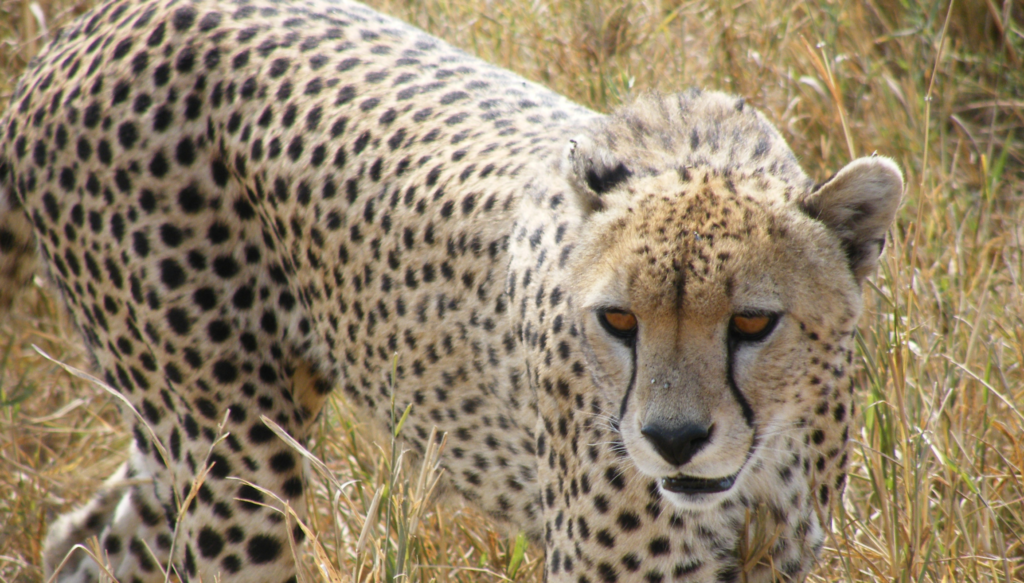
Cheetah:
This cat is most at home on the open plains of the Serengeti. Cheetahs are listed as a vulnerable species, with human-wildlife conflict threatening their survival. Unfortunately, the fastest land animal can’t outrun their biggest threat, humans. Often farmers will kill cheetahs in retaliation over livestock attacks. Naturally, cheetahs prey on gazelles and impalas, reaching speeds of nearly 70 miles per hour. Once they close in, they knock the prey down with a swiping paw and then suffocate the animal with a bite to the neck. But cheetahs have to eat quickly to avoid losing their meal to other predators like hyenas or lions.
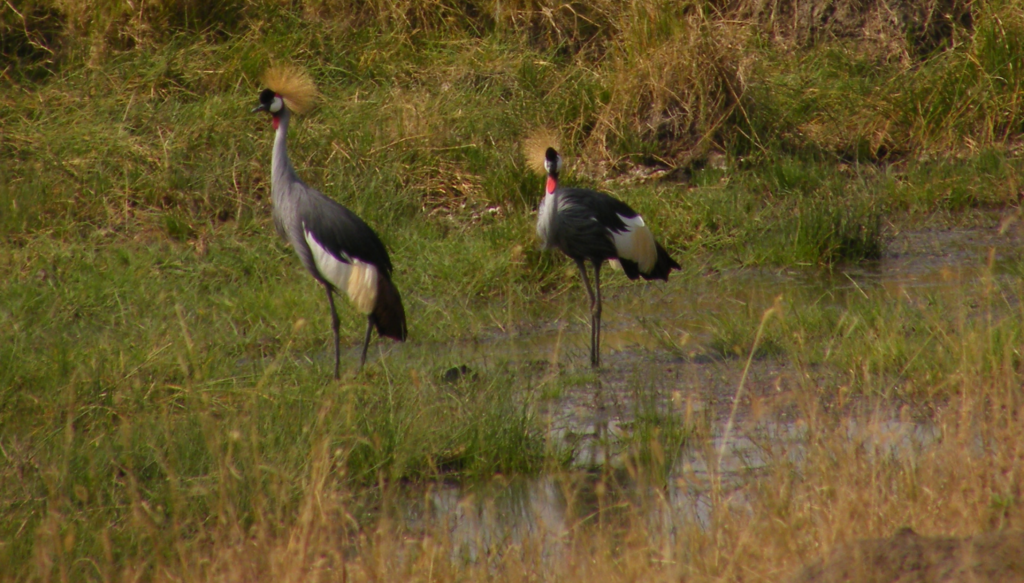
Grey Crowned Crane:
One of Africa’s most beautiful birds, the grey crowned crane is known for its striking contrast of colors from yellows and reds to whites and browns. Grey crowned cranes mate for life, and are often spotted in pairs on the grasslands. Cranes are among the most endangered families of birds in the world. The grey crowned crane is sadly no exception, they too are considered endangered, making any sighting on safari an honor.
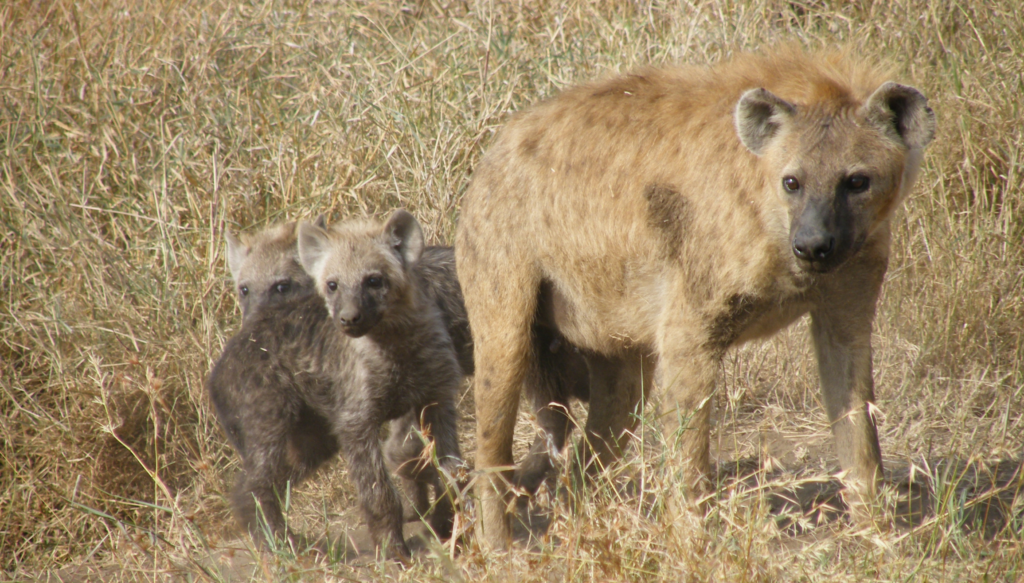
Spotted Hyena:
Most safari-goers wouldn’t guess that hyenas are Africa’s most common large carnivore, but between three different species, hyenas are found throughout the continent. The largest, and most likely to be observed on safari, are the spotted hyena. One of their biggest misconceptions is that hyenas are primarily scavengers, when in fact they are very skilled hunters. About 70% of their diet comes from hunting prey. Amazingly enough, their jaws and digestive tracks allow them to process nearly their entire meal, including the bones.
Plains Zebra:
Easily one of the most recognizable species on safari, zebras are highly sought after by photographers from hobbyists to professionals. Each year, hundreds of thousands of zebras migrate between the Serengeti plains and the Masai Mara in Kenya. This trek to find food and water sources covers a distance of around 1,800 miles. That journey is longer than a drive from Maine all the way to the southern tip of Florida.
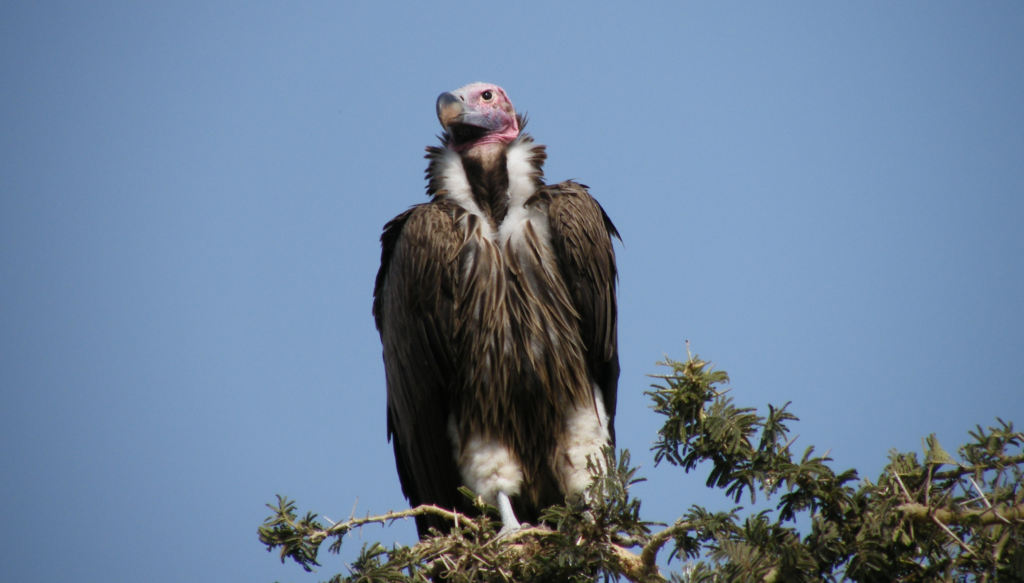
Lappet-faced Vulture:
My biased opinion is that vultures are beautiful, especially when it comes to lappet-faced vultures. These massive birds have a wingspan of over nine feet and are recognized by the bright reddish-pink skin on their bald heads. This endangered species’ population has declined drastically in recent years, with less than 6,000 individuals remaining in the wild. Any lappet-faced vulture sighting on safari is a special sighting indeed.
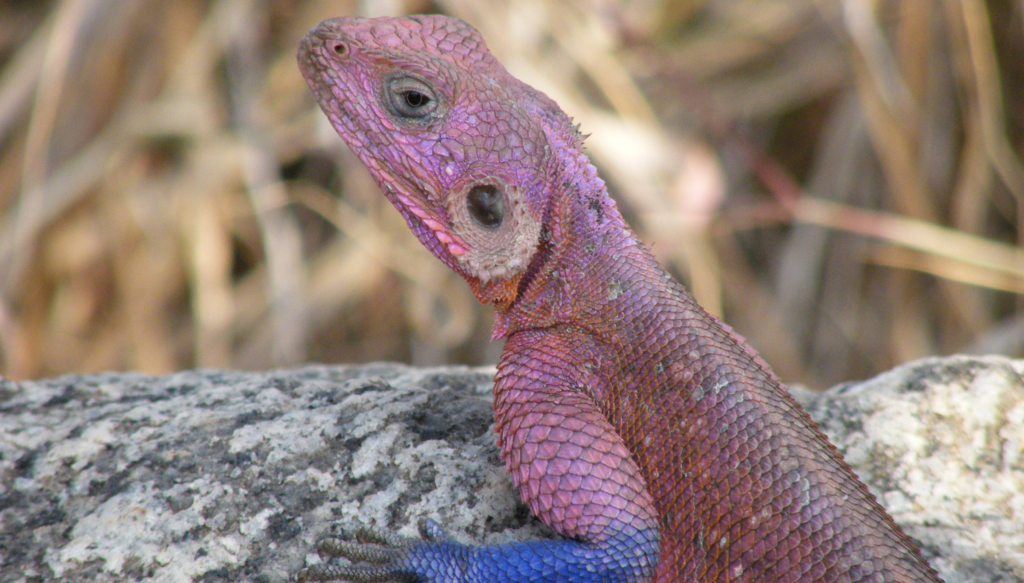
Red-headed Agama:
This small lizard usually measures about a foot in length, but its size is not what will turn heads. The red-headed rock agama is famous for its brilliant blue, turquoise, and red scales. In Serengeti, I was lucky enough to observe a male rainbow lizard sunning himself on a kopje rock. They primarily feed on insects and catch their prey using the tip of their tongues which are covered in mucous to stick to their prey.
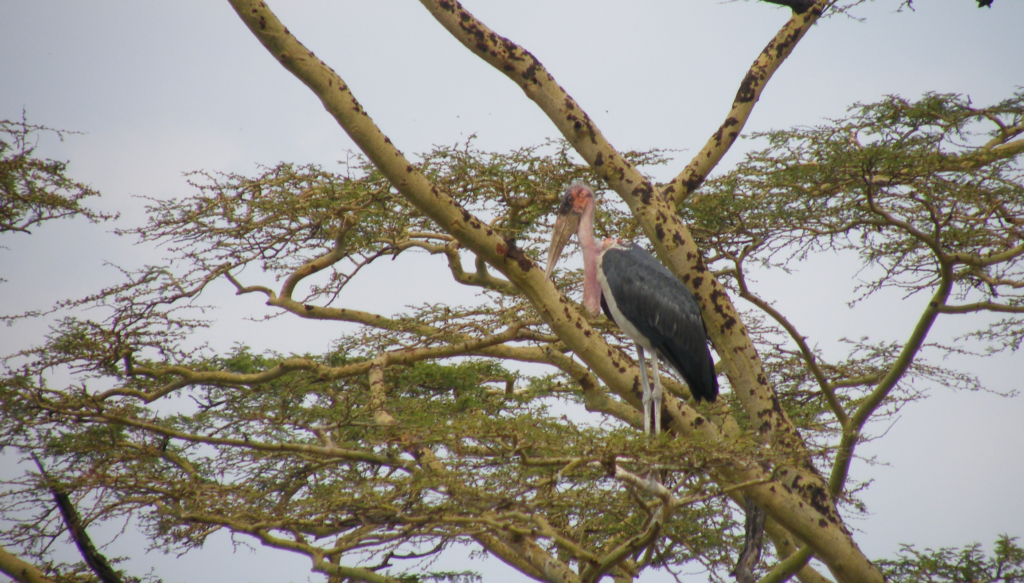
Marabou Stork:
Thought by many to be the ugliest birds on earth, the marabou stork has a trademark appearance unlike any other. Most notable is their large fleshy pouch that hangs from their neck. This air pouch is used in courtship displays and helps to amplify their calls. It’s no surprise that most safari-goers don’t take the time to fully appreciate this species, even though their feeding behavior is of great importance to the Serengeti ecosystem. Marabou storks are scavengers by nature and feed mostly on animal carcasses. By eating carrion they help to prevent the spread of pathogens, acting as nature’s clean-up crew.
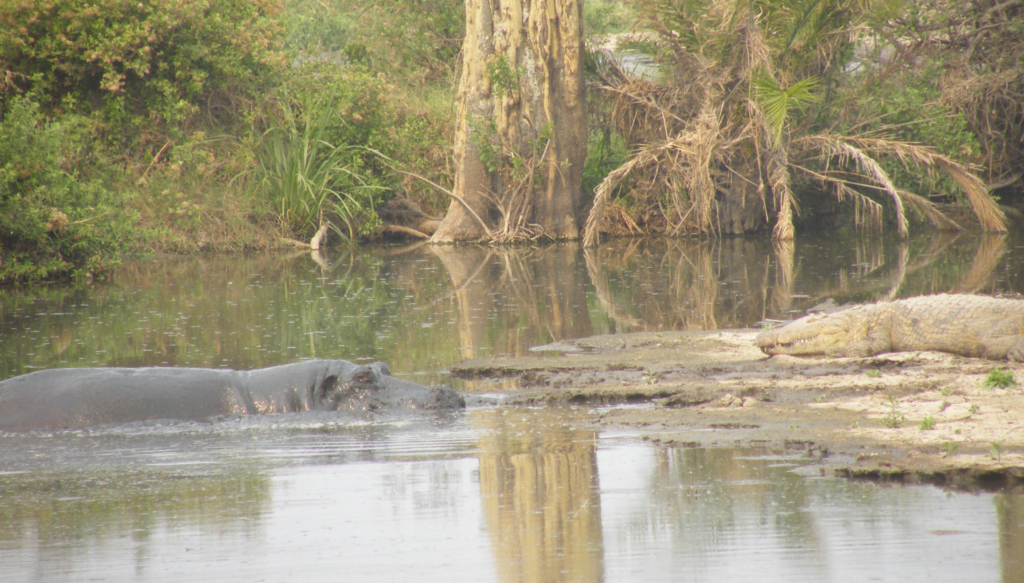
Nile Hippopotamus:
Known as Africa’s most dangerous animal, hippos are a formidable force to reckon with. As the third-largest land mammal, after elephants and rhinos, hippos typically weigh anywhere from 1-5 TONS! These surprisingly nocturnal species are adapted to spending the hottest parts of the days submerged resting in the water. Once the sun begins to set, hippos emerge and graze through the night. Unlike humans, hippos aren’t able to sweat to cool off. Instead, they secrete a viscous red fluid, which acts as a sunblock to protect their sensitive skin against sunburn. Though common in Tanzania, spotting hippos during the day involves observing their water retreats, like the Retina Hippo Pool situation in the middle of Serengeti National Park.
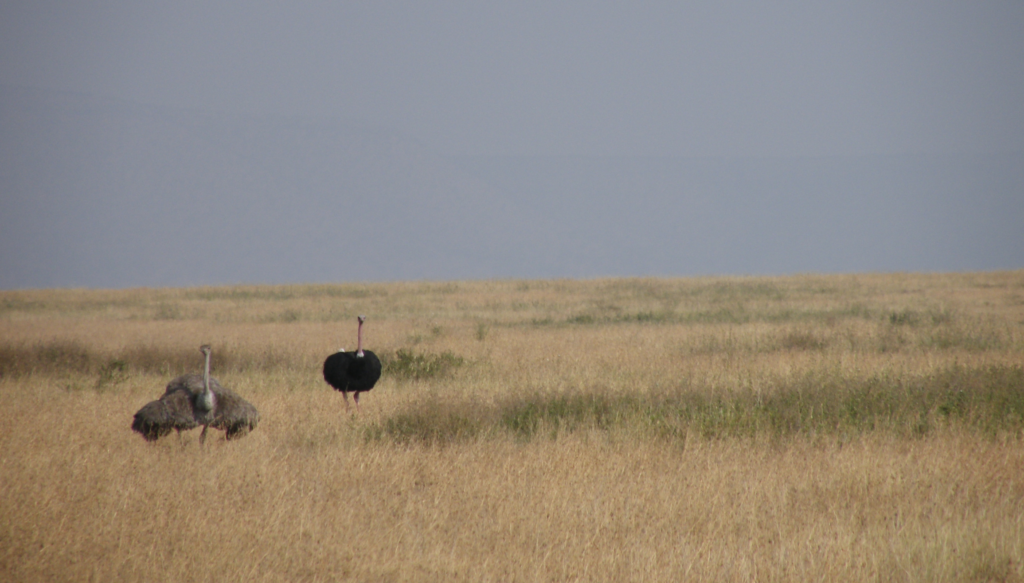
Ostrich:
The world’s largest birds thrive throughout Africa and are found in 25 different countries. I believe seeing ostriches on safari is quite the spectacle, especially since this species is packed with fascinating adaptations and behaviors unique to their 300-pound bodies. To stay vigilant, ostriches use their nine-foot height and their large eyes to watch for predators. In fact, ostriches have the largest eyeballs of any land animal! Males escort groups of females to form their own flocks, and play a large part in raising young. Telling males apart from females is quite easy; males are black with white wings, while females are brownish-gray.
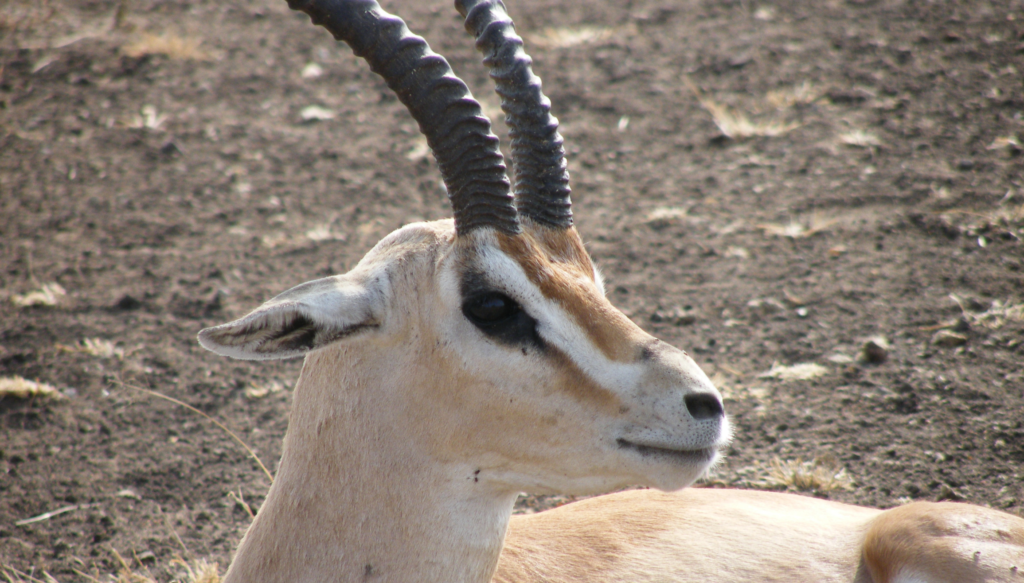
Grant’s Gazelle:
One of the most common herbivores on the Serengeti, Grant’s gazelle is mainly found in Tanzania and Kenya. This iconic grassland species have a very slender build and typically only stands around five feet tall. They are fond of open grassy areas but avoid high grass growth for the risk of predators hiding in the vegetation. Grant’s gazelles have adapted to not depend on water, meaning their hydration comes from the foods they eat. Therefore this species is known to migrate in the opposite direction of wildebeests during the Great Migration. This allows Grant’s gazelle to thrive due to the lack of competition for food.



